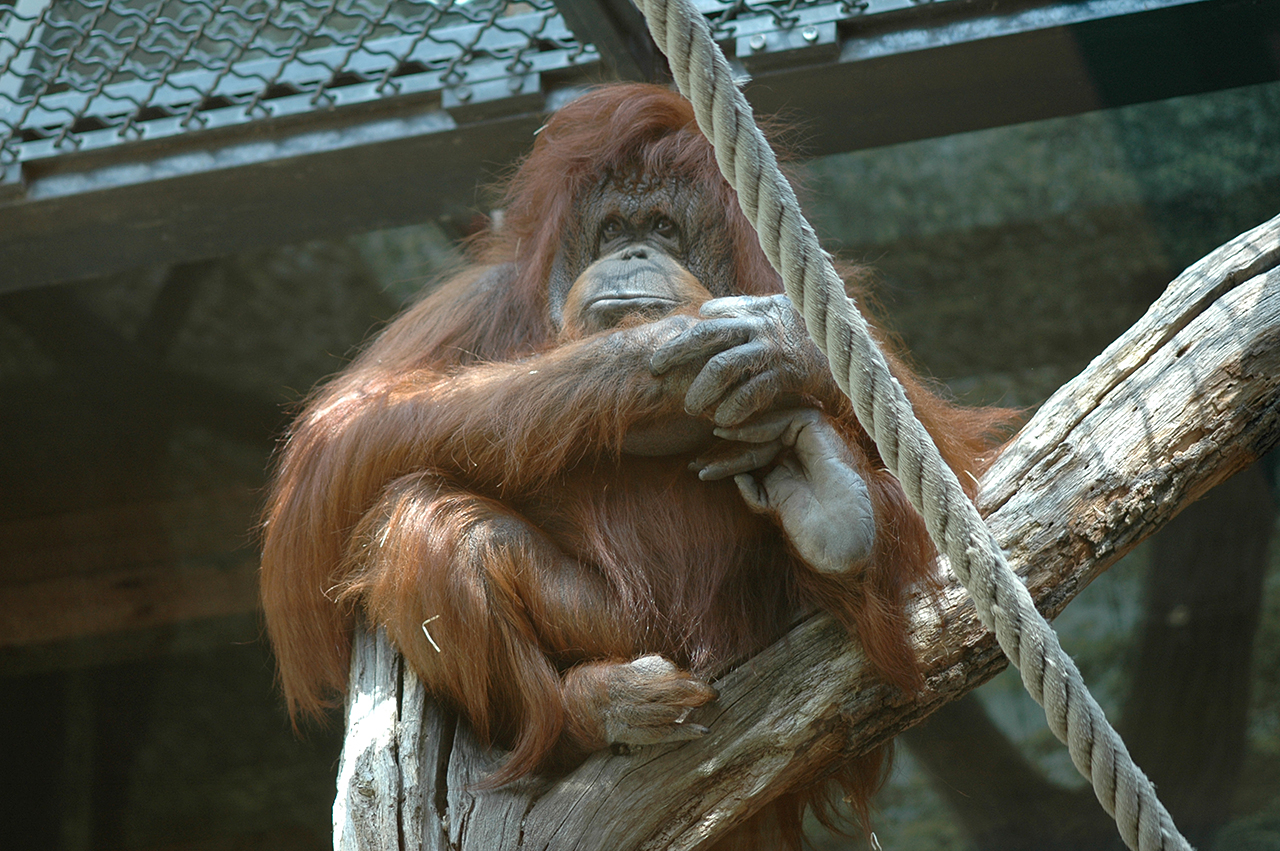Nénette
Nicolas Philibert’s film is at once a humbling, enlightening experience.
For the Ménagerie du Jardin des Plantes in Paris, monkey business is big business. Every day scores of tourists cross the Seine and flock to the world’s oldest zoo to catch a glimpse of its star attraction – a 41-year-old female orangutan named Nénette.
Snatched from her Bornean canopy when she was still a tree-swinging monklet, Nénette has spent the last 38 years in captivity, confined to an interior space that puts most Paris apartments to shame but is a far cry from her former tropical digs.
Separated by a large perspex frame, the zoo’s patrons watch Nénette eagerly, hoping to catch glimpses of the mischievous arboreal antics associated with these loveable copper-haired simians. It’s an artificial communion, of course, one that Nénette is long accustomed to and largely nonplussed by. While children smile and cameras flash incessantly, Nénette idly passes the hours, exerting as little energy as possible while leaving the circus act to her son Tübo and other, more exuberant bedfellows.
She cuts a forlorn figure, for sure, but is she ‘depressed’, or are concerns for her emotional wellbeing merely a projection of human compassion for our fluffy cousins? Shrewdly, documentarian Nicolas Philibert doesn’t openly form an opinion either way, instead allowing visitors’ conversations – by turns painting Nénette as a tragically repressed soul and a mangey ape – to play out over static close-ups of our star subject.
The reality is that Nénette is just old. In her rich life she has succeeded three mates and mothered four children, surviving as the zoo’s longest-serving resident, and now seems perfectly content lounging around drinking tea and lackadaisically munching her greens – caged but safe from nature’s perils and the ever-destructive hand of man.
Captivity today is more of a social conundrum than a barometer of human supremacy on this Earth, but Nénette shows that we as a species are unable to disassociate our behavioural characteristics with those of other primates. Those deep, dark eyes are so expressive, so familiar, if only she could part those wide rubbery lips and speak!
Herein lies the film’s unspoken truth. As Nénette sits slumped in silence, sucking fruit and scratching her nether regions, it is left to those strange creatures on the other side of the glass to assess her mental state and tell her story.
